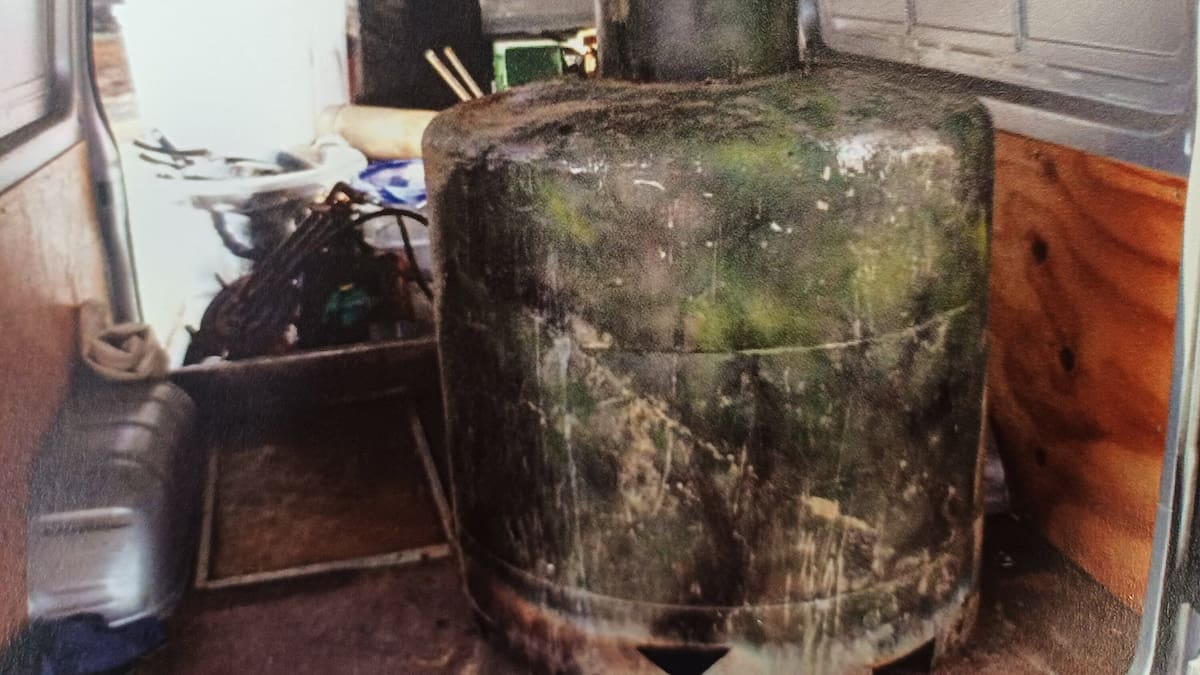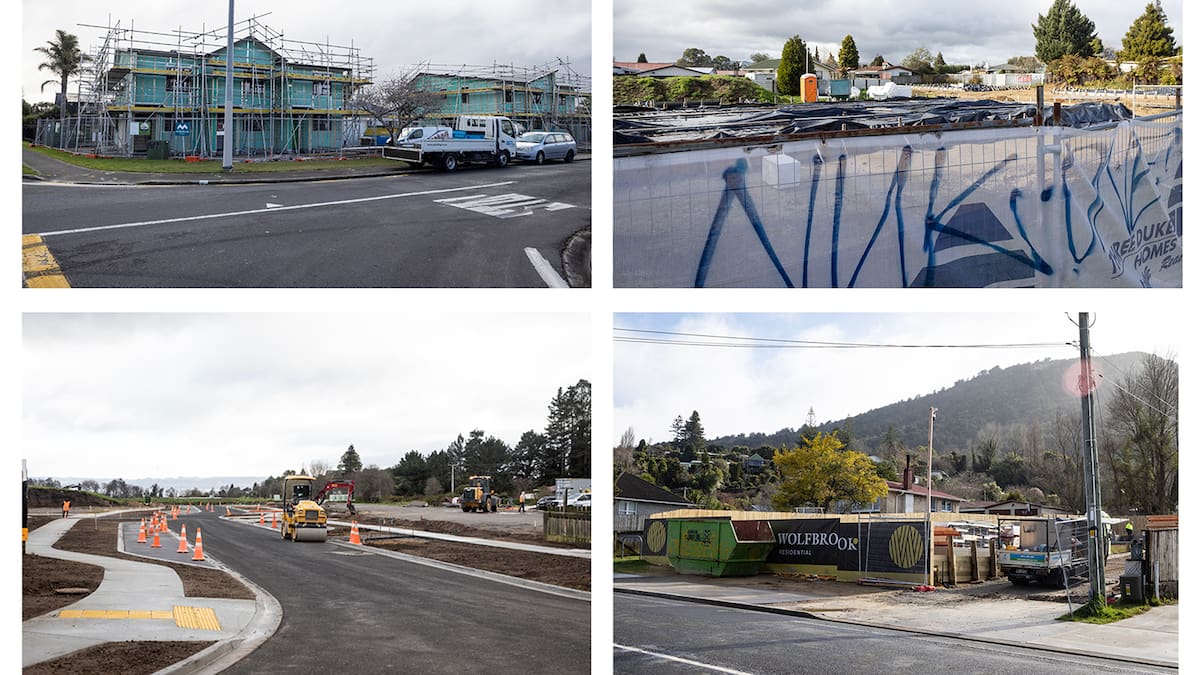A large metal cylinder, alleged to be a “parr bomb” used in the manufacture of methamphetamine, had to be removed from the lab by helicopter.
After making his way down a muddy bulldozer track Detective Sergeant Alan Kingsbury pushed through a small opening in dense bush and down a steep track to where police had discovered a tent-like structure.
It’s alleged that structure was a “terraced” clandestine lab, covered in camouflage netting, and dug into the side of steep bush.
Inside it allegedly contained a six-burner barbecue, gas elements, a hose siphoning water from an underground natural spring – and a metal cylinder so large it had to be removed by helicopter.
Kingsbury had been called over by fellow officers who were part-way through a two-day search of a rural area in the Lower Kaimai Ranges that was focused on suspected methamphetamine production.
Today he’s given evidence in the Tauranga District Court about what he found inside the alleged lab during the trial for a man and woman who jointly face six charges related to methamphetamine production and drug-related offending.
He told the court he’d been part of a wider search of the property when he was told other police officers believed they had found a lab in the bush. At the end of the gravel driveway, he walked down a muddy “bulldozer track” where there was a clearing. Beyond that was a small opening, over a fence and into the dense bush beyond, where the alleged lab was concealed.
The tent-like structure which covered the lab was, “approximately six metres long and probably about three or four metres wide and had a curve to it, just due to the way the land is shaped”, Kingsbury said in evidence.
Under camouflage netting, the detective said police found items typically associated with methamphetamine manufacture, including a component known as a “parr bomb”.
The police say there were two “parr bombs”, which, broadly speaking, are “heavy, welded cylinders” used to contain a chemical reaction in the manufacturing process.

The court heard that although some items allegedly found in the lab such as buckets, barbecues and frying pans may have other uses, “parr bombs” were used exclusively in methamphetamine labs.
“They have no legitimate use,” Kingsbury said.
In Kingsbury’s evidence, the court heard that most of the items found down in the alleged clan lab were carried up by officers to a flat area for processing.
However, the larger “parr bomb” was not removed by hand, it was removed by helicopter.
Kingsbury said that “given how large it was and how heavy it was”, it had been airlifted out, because there were health and safety concerns related to carrying it back up through the bush.
The Crown also alleges the police search uncovered around 14kg of dried cannabis, wrapped in plastic bags and concealed in buckets in the undergrowth, and a suitcase wrapped in black plastic which was also hidden in bush and which contained more than $120,000.
During cross-examination, Kingsbury was challenged by defence lawyers David Niven and Philip Hamlin on police processes and the accuracy of noting exhibits.
Niven questioned the note-taking and photography of a particular spoon.
Kingsbury said he’d taken it up the hill for processing but hadn’t taken notes, because it was difficult to constantly take notes while wearing forensic overalls that didn’t have pockets.
He said he could identify where the spoon had been found and confirm he had carried it himself up to an area for processing.
The defence questioned why a small lighter found near the barbecue hadn’t been taken as an exhibit when its rough metal edge could have contained DNA evidence.
Detective Kingsbury said gloves found at the site had been sent away for DNA testing – no DNA evidence was found. He said the lighter wouldn’t have held DNA if the operator had been wearing gloves.
Defence lawyer Philip Hamlin used metadata, specifically the GPS co-ordinates, from photos taken by the detective to challenge the police’s allegations as to where cannabis had been located and photographed.
The detective accepted that the police-labelled map provided to the jury of the terrain, which showed roughly where various items had been found in relation to the defendants’ dwellings, appeared to be at odds with the location data from his iPhone.
Both defendants have name suppression. The trial continues.
Hannah Bartlett is a Tauranga-based Open Justice reporter at NZME. She previously covered court and local government for the Nelson Mail, and before that was a radio reporter at Newstalk ZB.





